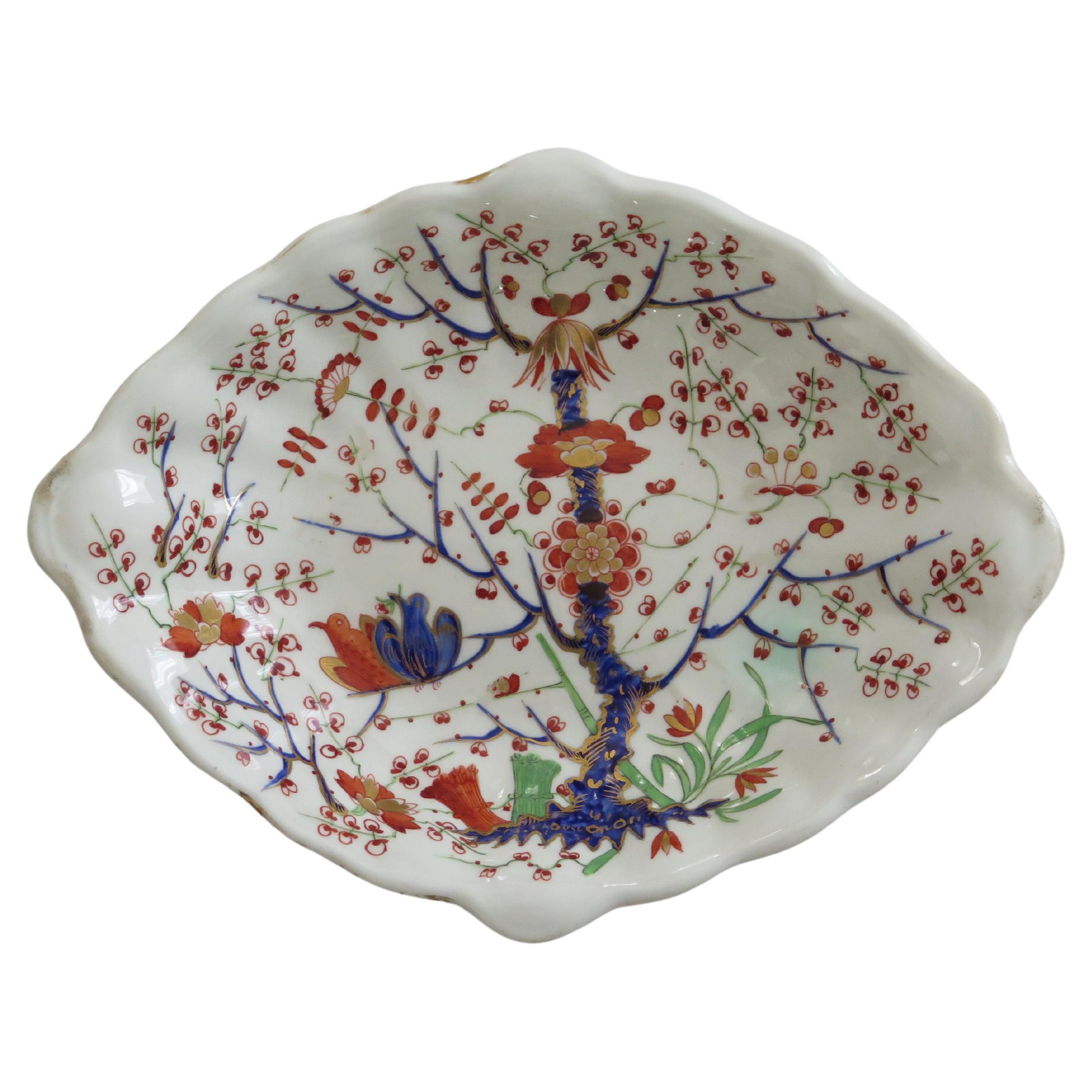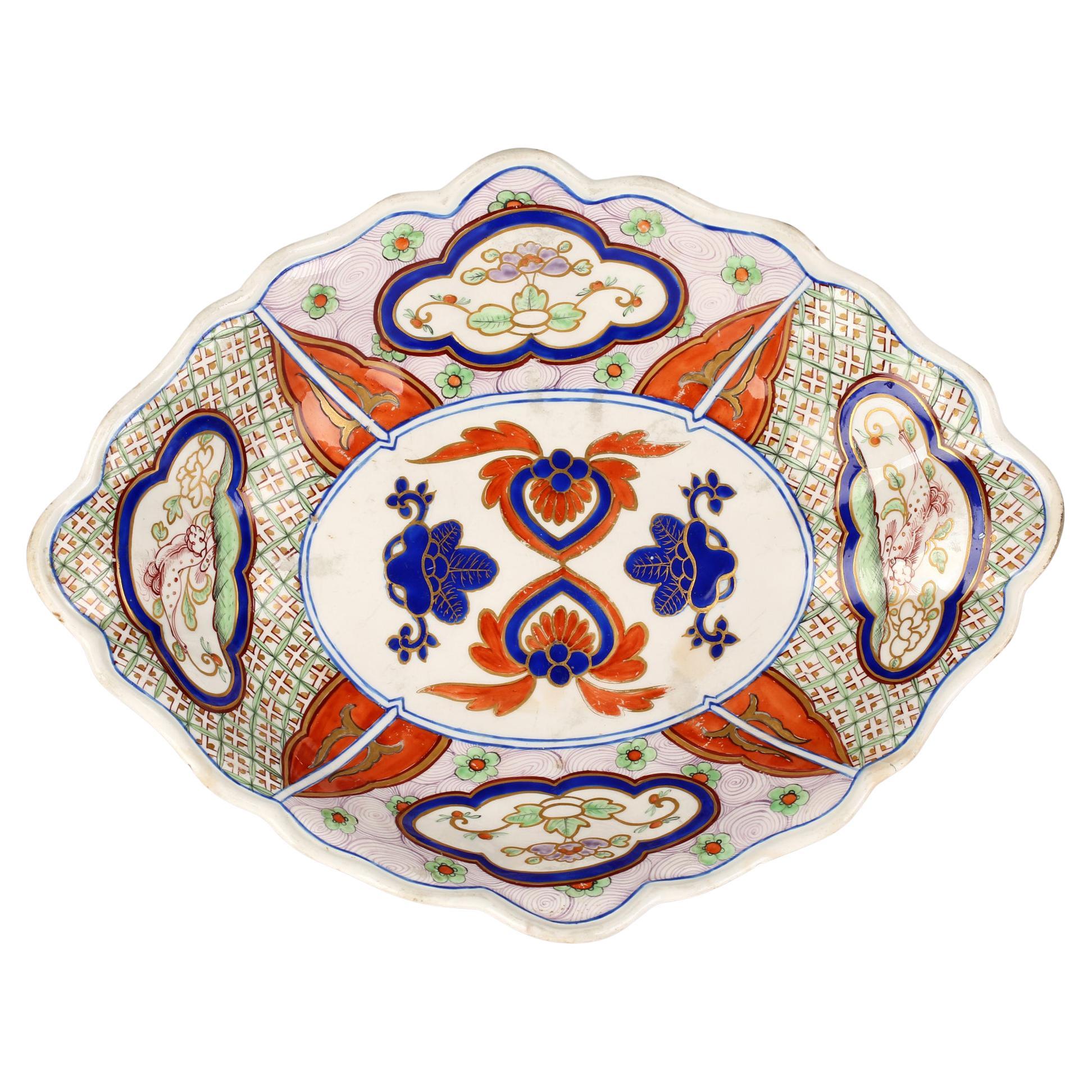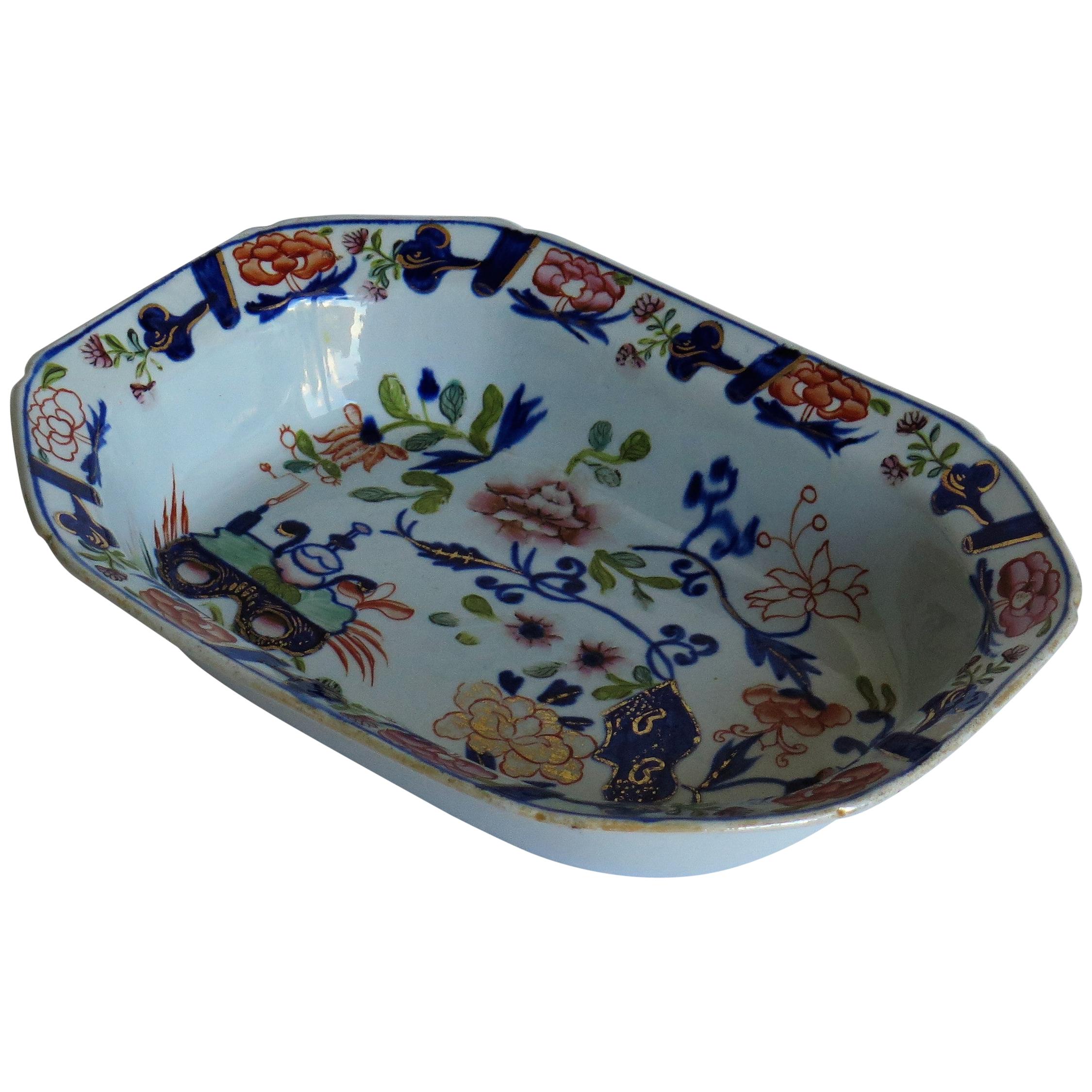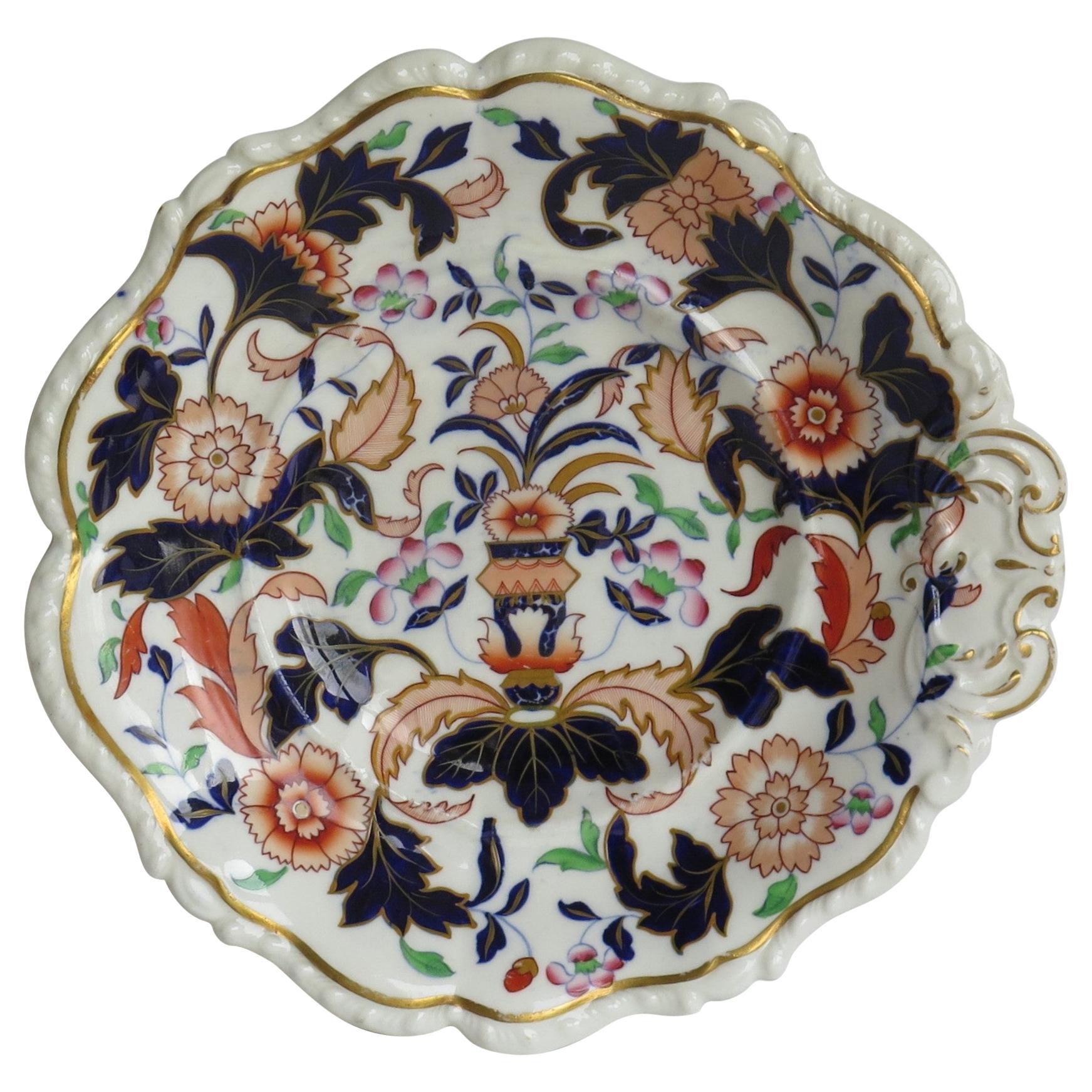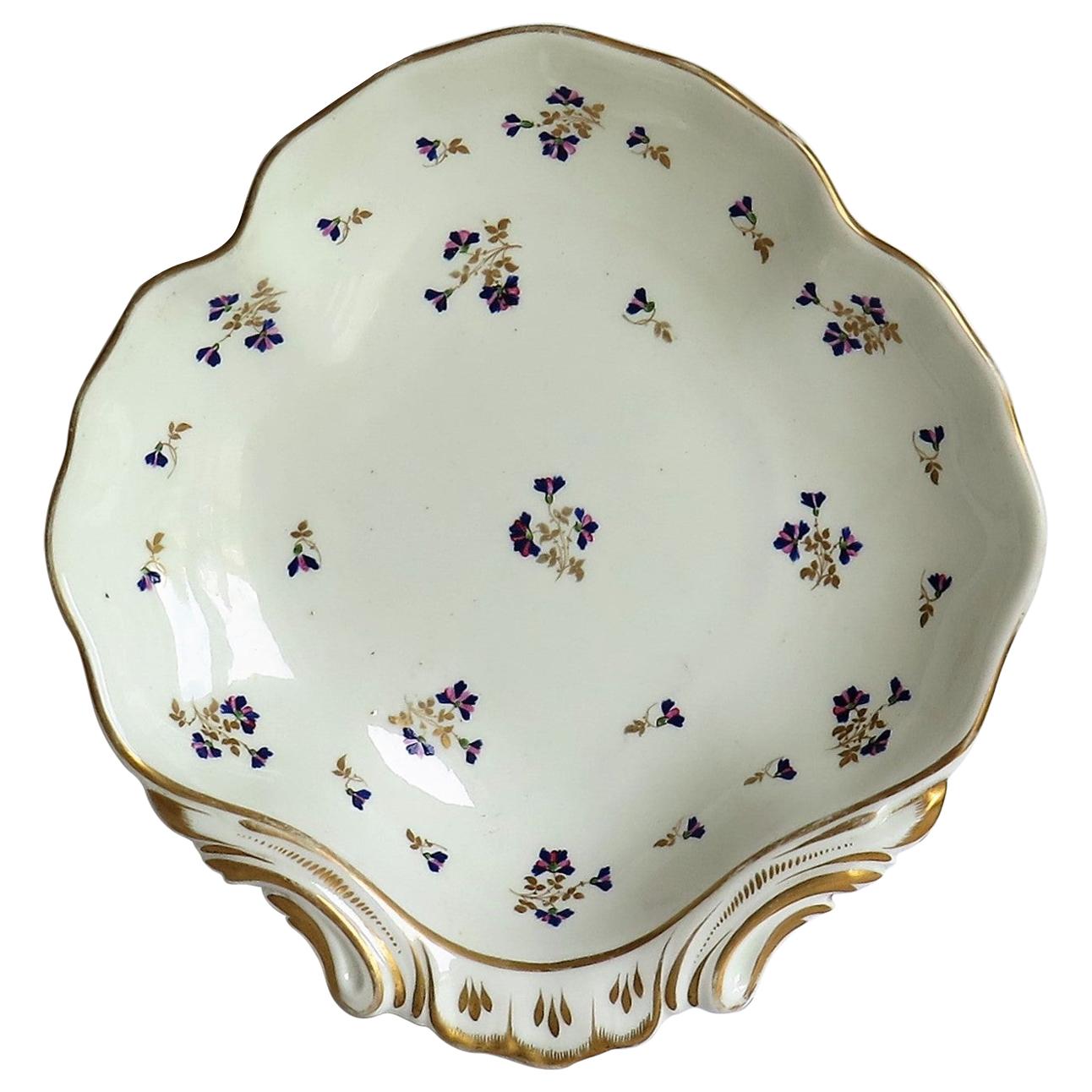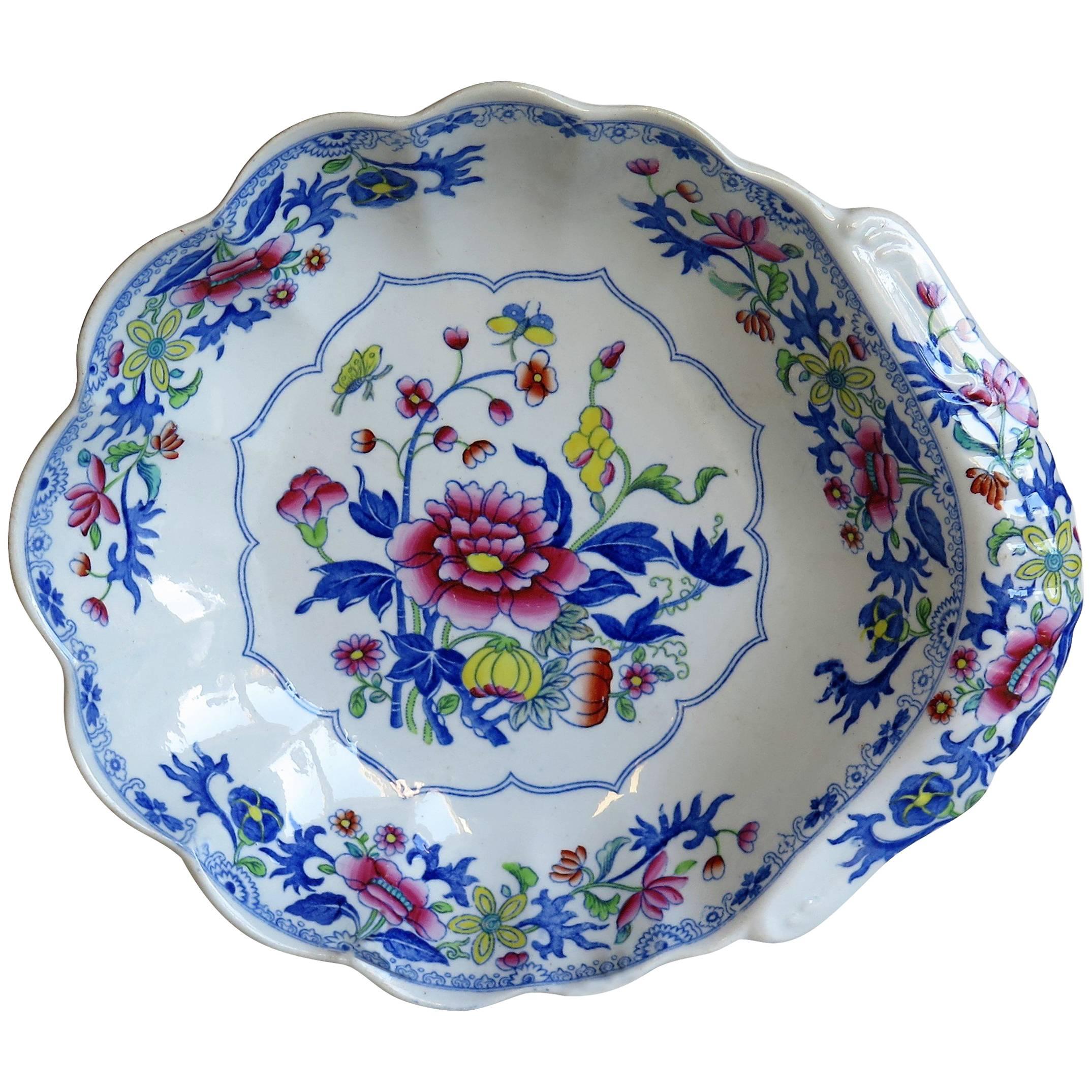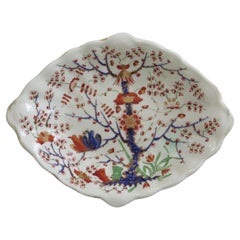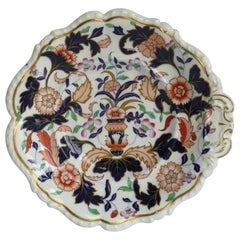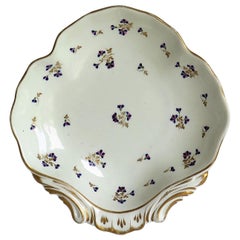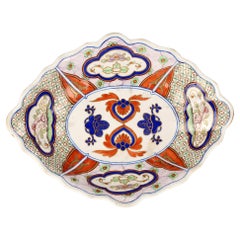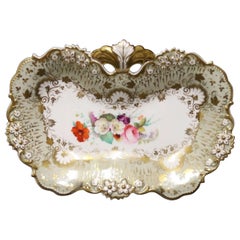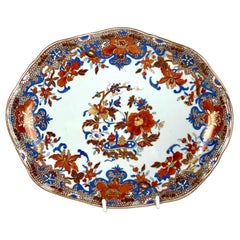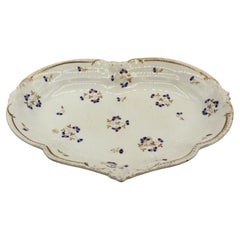Items Similar to Georgian Derby Porcelain Serving Dish or Bowl Hand-Painted, Fully Marked Ca 1815
Want more images or videos?
Request additional images or videos from the seller
1 of 16
Georgian Derby Porcelain Serving Dish or Bowl Hand-Painted, Fully Marked Ca 1815
$313.82
$584.9846% Off
£228
£42546% Off
€267.25
€498.1746% Off
CA$428.43
CA$798.6046% Off
A$476.61
A$888.4146% Off
CHF 249.84
CHF 465.7246% Off
MX$5,824.04
MX$10,856.2146% Off
NOK 3,181.45
NOK 5,930.3446% Off
SEK 2,994.90
SEK 5,582.5946% Off
DKK 1,994.94
DKK 3,718.6446% Off
Shipping
Retrieving quote...The 1stDibs Promise:
Authenticity Guarantee,
Money-Back Guarantee,
24-Hour Cancellation
About the Item
This is a good oval shaped serving dish or bowl, made by the Derby factory, hand painted and gilded in a free flowing floral pattern, during the reign of George 111 in the early 19th century, circa 1815.
This is a well potted oval shaped dish or bowl with a vertically fluted and moulded side edge and rim, sitting on a low foot.
The piece is beautifully hand decorated in a free flowing manner, in one of Derby's Imari style floral Patterns, with enamels of cobalt blue, burnt orange, pink and yellow, all in varying shades. It has then been hand gilded, with gold detail to some of the flowers, blue leaf, the inner border and the outer rim.
The dish has the early Derby Crown and cross batons mark, in red to the base, together with the "D" below. There is a "48" hand painted below the "D" which is probably the painter or gilders marks, as per pages 40 & 41 of the reference book - Derby Porcelain by John Twitchett, published by the Antique Collectors Club.
Overall a very pretty Georgian porcelain Dish.
- Creator:Derby (Manufacturer)
- Dimensions:Height: 2 in (5.08 cm)Width: 11.25 in (28.58 cm)Depth: 8.63 in (21.93 cm)
- Style:Georgian (Of the Period)
- Materials and Techniques:
- Place of Origin:
- Period:
- Date of Manufacture:circa 1815
- Condition:Wear consistent with age and use. Very fine Crazing to Glaze. Possible very fine old star hairline/glaze line to rear. These fine crazing and lines are very hard to see. Small firing fault to rim - please see images NO Chips, NO Restoration. Some gilding loss from use.
- Seller Location:Lincoln, GB
- Reference Number:Seller: P 17451stDibs: LU990324685532
About the Seller
5.0
Platinum Seller
Premium sellers with a 4.7+ rating and 24-hour response times
Established in 1993
1stDibs seller since 2013
1,393 sales on 1stDibs
Typical response time: <1 hour
Associations
LAPADA - The Association of Arts & Antiques Dealers
- ShippingRetrieving quote...Shipping from: Lincoln, United Kingdom
- Return Policy
Authenticity Guarantee
In the unlikely event there’s an issue with an item’s authenticity, contact us within 1 year for a full refund. DetailsMoney-Back Guarantee
If your item is not as described, is damaged in transit, or does not arrive, contact us within 7 days for a full refund. Details24-Hour Cancellation
You have a 24-hour grace period in which to reconsider your purchase, with no questions asked.Vetted Professional Sellers
Our world-class sellers must adhere to strict standards for service and quality, maintaining the integrity of our listings.Price-Match Guarantee
If you find that a seller listed the same item for a lower price elsewhere, we’ll match it.Trusted Global Delivery
Our best-in-class carrier network provides specialized shipping options worldwide, including custom delivery.More From This Seller
View AllGeorgian Derby Porcelain Platter or Dish Partridge Pattern hand painted, Ca 1815
By Derby
Located in Lincoln, Lincolnshire
This is a very good antique porcelain platter or dish, made by the Derby factory, hand painted and gilded in the beautiful Partridge Pattern,...
Category
Antique Early 19th Century English Georgian Platters and Serveware
Materials
Porcelain
$335 Sale Price
42% Off
Georgian Masons Ironstone deep Pie Dish in chinoiserie pattern, Ca 1815
By Mason's Ironstone
Located in Lincoln, Lincolnshire
This a Georgian, early 19th century Deep Dish or Pie / Serving Dish made by Mason's Ironstone in the small vase, flowers and rock gilded chinoiserie pattern, dating to circa 1815.
T...
Category
Antique Early 19th Century English Georgian Serving Bowls
Materials
Ironstone
Early 19th Century Shell Desert Dish Porcelain Hand Painted, Staffordshire UK
By Staffordshire
Located in Lincoln, Lincolnshire
This is an early 19th century porcelain desert dish with a fluted shell shape, made by one of the Staffordshire, English potteries and dating from the George 111rd period, circa 1820.
This piece is unmarked to the base but we believe it is very well hand painted and could be by one of the high quality English makers such as Coalport or Davenport. Either way this piece is a beautifully hand decorated piece in a stunning Imari style pattern with carefully hand-gilded highlights.
Overall a beautifully painted early English porcelain...
Category
Antique Early 19th Century English George III Ceramics
Materials
Porcelain
$346 Sale Price
22% Off
Georgian Derby Shell Dish or Plate Hand Painted & Gilded Pattern 129, Ca 1810
By Royal Crown Derby Porcelain
Located in Lincoln, Lincolnshire
This is a beautiful porcelain shell dish or plate hand painted and gilded in pattern 129, made by the Derby factory, in the reign of George 111 in the early 19th century, circa 1810.
Shell dishes, named as such for taking the shape of a shell were used in Dessert services.
This dish has been exquisitely hand decorated in a French influenced "Chantilly" pattern ( No. 129) consisting of scattered sprigs of cornflowers in pink, blue and green with gilt leaves and with further rich hand gilding around the rim and handle section.
The dish has the early Derby...
Category
Antique Early 19th Century English George III Decorative Dishes and Vide...
Materials
Porcelain
$209 Sale Price
56% Off
Georgian Spode Ironstone Shell Dish or Plate Bang Up Pattern No. 2886, Ca 1820
By Spode
Located in Lincoln, Lincolnshire
This is an early 19th century stone china (Ironstone pottery) desert dish with a fluted shell shape, produced by Spode and dating from the George 111...
Category
Antique Early 19th Century English Chinoiserie Decorative Dishes and Vid...
Materials
Ironstone
$269 Sale Price
37% Off
Georgian Davenport Saucer Dish or Plate Ironstone in Pattern 659, circa 1815
By Davenport Porcelain
Located in Lincoln, Lincolnshire
This is a good early hand painted ironstone (stone china) saucer dish or plate, made by William Davenport and Co., Longport, Staffordshire Potteries, England, George 111rd period, ci...
Category
Antique Early 19th Century English Georgian Ceramics
Materials
Ironstone
$203 Sale Price
37% Off
You May Also Like
Derby Porcelain Georgian Rare Hand Painted Dish
By Derby
Located in Bishop's Stortford, Hertfordshire
A rare and unusual Georgian Derby Porcelain dish finely hand painted colored enamels dating from around 1790. The oval shaped dish has a raised scalloped rim and is hand painted with...
Category
Antique 1790s English George III Porcelain
Materials
Porcelain
An Early 19th century English porcelain hand painted porcelain davenport dish
Located in Central England, GB
A Fine Early 19th C English Davenport Dish, Circa 1835
A rare William IIII period Davenport porcelain kidney shaped dish raised up on to three foliate and scrolled feet. This fine piece has a shaped and pierced edge with raised and moulded flower heads and acanthus scrolls around it. The dish is exquisitely decorated over a grey boarder with a broad band of delicate foliate stylised intricate gilding with leaves, shells and anthemion amongst its detail. The centre of the bowl has a white ground with a superb hand-painted display of brightly coloured exotic flowers with leaves and foliage. Marked on the underside with the purple Davenport Longport Staffordshire...
Category
Antique 19th Century Regency Decorative Dishes and Vide-Poche
Materials
Porcelain
Antique Chamberlains Worcester Porcelain Dish in Kakiemon Style England Ca. 1810
By Chamberlains Worcester
Located in Katonah, NY
Painted at Chamberlain's Worcester around 1810, this dish draws inspiration from 17th-century Japanese Kakiemon palette and design.
The style showcases enamels in a distinctive Kakie...
Category
Antique Early 19th Century English Regency Decorative Dishes and Vide-Poche
Materials
Porcelain
c. 1820 English Crown Derby Sweetmeat Dish
By Crown Derby
Located in Chapel Hill, NC
Circa 1820 Crown Derby sweetmeat dish, English. Heart lozenge form decorated with corn flowers with gilt highlights (some expected wear & minor rough area left edge).
10.5" x 8" x 1 ...
Category
Antique Early 19th Century English Victorian Serving Pieces
Materials
Porcelain
Large Dish, Chelsea, circa 1755
By Chelsea Porcelain
Located in Melbourne, Victoria
A large platter, probably once associated with tureen. Beautiful flower painting, possible done outside the factory at the Giles studio in London, or perhaps at the Chelsea studio by a painter who had previously worked there. The tulip, heartease, and others look very Giles.
One of the most distinctive features of Chelsea porcelain is its intricate floral painting, which often featured detailed, lifelike renditions of flowers and other botanical subjects. The factory employed skilled artists who were trained in the art of flower...
Category
Antique Mid-18th Century English Neoclassical Porcelain
Materials
Porcelain
Mid 19th Century English Staffordshire Minton Pattern Platter
By Minton
Located in Chapel Hill, NC
Minton pattern Well & Tree of Life platter, English, Staffordshire, marked "New Stone" & BB (Best Body), date mark of 1858. Chip on one supporter. 19 5...
Category
Antique Mid-19th Century English Victorian Ceramics
Materials
Ceramic
$325 Sale Price
45% Off
More Ways To Browse
Hand Painted Blue Bowl
Georgian Gold Hand
Gold Hand Painted Glass Bowl
Antique Gold Painted Bowl
Antique Fluted Bowl
Antique Derby Porcelain
Pink Glass Dish
Fluted Bowls
Antique Derby Silver
Antique Yellow Glass Bowl
Derby Crown
Gold Bowl Hand Painted Flowers
Glass Dish Orange
Gold Oval Bowl
Orange And Red Glass Bowl
Cobalt Blue Bowl Antique
Yellow Porcelain Bowl
Antique Crown Derby
